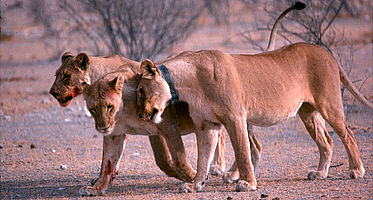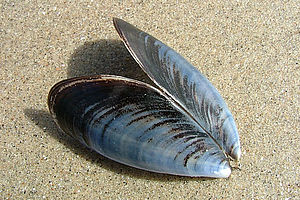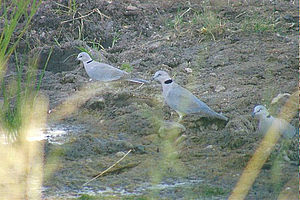‘Is not the lion a mirror of man?
How did we get the lion’s share?
By being superior to the lion we had to be better at what the lion was best at dominating his world.’ (Randall Eaton)
‘Surely, you cannot be serious?’ I asked my friend, whilst we watched a lion pride lazing in the heat of an Etosha day. ‘Why not?’ he replied emphatically, ‘when women have too many babies we put them on the Pill’. He spoke with the authority of a medical obstetrician and gynaecologist, but also as a dedicated conservationist. I had been telling him about the explosion in lion numbers during the 1970s, a period of exceptional rains. Etosha’s ecosystem responded with grasslands that resembled a cornfield; herbivores followed and flourished on the profusion of energy available; lions did what lions do best when there is abundant prey available – they produced cubs at a prodigious rate. Moreover, their increase was aided by a high level of the dreaded bacterial disease anthrax, which decimated wildebeest and zebra numbers. Whereas herbivores are highly susceptible to anthrax, lions and other predators in Etosha are mostly resistant to infection by it. Lions can feast on an anthrax-infected carcase without any ill-effects. This is because anthrax has probably been present in the system for hundreds, if not thousands of years, giving carnivores ample time to build up antibodies against it. As biologist, I was responsible to make recommendations for managing Etosha which, even although it covers more than two million hectares, is fenced, with a liberal supply of artificially provided water. The combination of fencing, abundant waterholes and anthrax favours the ever opportunistic lions at the expense of wildebeest and zebra, their major prey.
My quandary was that the 1980s heralded a subsequent drought that took most of the country, including Etosha, into its withering grip. The notorious ‘Drought of the Century’ brought about that elephant were facing a cull. Their numbers in Etosha had increased to a level that threatened their habitat and that of the other herbivores. There were close to 3 000 elephants in Etosha and the authorities were implementing a cull, removing more than 500. Why not cull lions as well? My misgivings about doing this were strengthened by the results of a lion and spotted hyaena cull in the Kruger National Park, South Africa. There the lions regained their previous numbers within 18 months of the cessation of culling, whilst the hyaenas’ specialized and sensitive matriachal social system was significantly affected. To cull lions seemed inappropriate. We knew nothing about the effects of a cull on natural selection, loss of genetic variation and subsequent behaviour. Just the thought of culling lions in a national park did not appeal to me. Another option was to capture and translocate them, but there was at that time no market for free-ranging lions in other conservation areas or on game farms. Furthermore, translocated wild lions often caused significant problems in their new homes. The idea of contraception proposed by my companion suddenly became an attractive alternative.
‘What is more’ the gynaecologist added convincingly ‘the contraceptive has been used in millions of women, so humans are the guinea pigs, not lions. If you cull the wrong lion, it’s irrevocable. If you apply contraception, it’s reversible, it can be rotated in different lionesses, and you’re not destroying genetic material.’ Thus was born the idea of lionesses on the ‘Pill’. We both agreed that ours would be a scientifically acceptable experiment, in which we would apply contraception to random selected lionesses in different prides, leaving the majority of females untreated. They would be the reference or control animals. To satisfy statisticians we would need to treat 10 fertile females. We were convinced that the hormones to be used would render the lionesses temporarily infertile; that was not the objective. Hormones are powerful agents of behaviour and our aim was to monitor the effects of synthetic chemicals on the activity patterns of wild lions. It was critical to the success or failure of our trials because lions are the only truly social cat species in the world. We wanted to know if treated lionesses would become aggressive or submissive towards their pride members, or if males would accept or expel them from the group. Whatever the outcome, there was an interesting parallel to be made – lions and humans are both top predators and are both highly sociable.
The contraceptives came in the form of slow-release implants and the surgical procedure was simple, taking a few minutes. A small incision in the neck skin of an immobilized lioness, followed by insertion of the implant just below the surface, was the ideal site. The sutured incision healed within a fortnight. Because it was vital to locate each of the 10 lionesses in various prides, we used radio transmitters embedded in collars fitted around their necks. These emitted a distinguishing signal on our receiver. After that began hundreds of hours of intensive monitoring of six prides, which included the individual behaviour of treated and untreated lionesses. Using observers in relays, we watched and followed the lions continuously for entire days and nights, classifying their activities into 13 different categories. When statistical tests of the data showed no significant differences between lionesses on contraception and those without, we could report with confidence that, on average, all lions rested between 20 and 22 out of 24 hours (or 85% to 90% of their time). The remainder was mostly spent walking, hunting and feeding, with drinking, vocalizing and social behaviour comprising a very small amount of time.
During the three-year study, we purposefully removed the implants from five of the lionesses. They all reverted to fertility, giving birth to healthy cubs. Our trial was cut short when a large number of lions, including those on contraception, were tragically destroyed when they trespassed onto ranchland adjoining Etosha. Our resolve not to cull lions was annulled by enraged farmers, who had the final say, using bullets, gin traps and poison. In this manner at least 84 Etosha lions were destroyed in one year. Nevertheless, we maintain that contraception is preferable to capture or culling.










